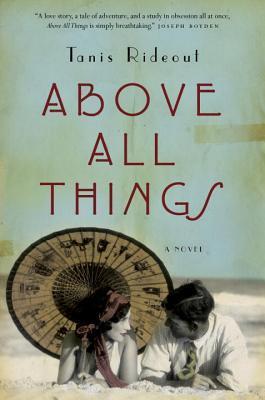What do you think?
Rate this book


288 pages, Kindle Edition
First published June 19, 2012
44 tins of quail in foi gras; 120 tins of bully beef; dozens of wrapped squares of flaky chocolate; 9 tins of tobacco; 7 tubes apiece of petroleum jelly, to be smeared on chapped faces, to deflect the sun; 63 working oxygen canisters; 26 tents of varying sizes; a crate of cutlery and tin plates; one case of Montebello champagne; 17 bottles of Macallan whisky, not less than 15 years old. Miles and miles of rope, campbeds, tents, tools, and cooking pots. [p.34]
The Col had shocked him when George took him to see it the day after he arrived at [Advanced Base Camp]. He'd stood at the bottom of the long saddle that connects Everest to her neighbour Changste and looked up: thirteen hundred mostly vertical feet. All ice and snow. Above the Col, nothing was protected. Above it, the wind screamed down in a terrible way that he couldn't quite grasp. That was where they got turned back in '21. Where the avalanche had occurred in '22. George pointed: "On the lower section we'll cut steps and haul ourselves up them. But the last twenty feet" - George drew his attention to the chimney that they would follow, the route he would try to take - "might as well be rock." [p.134]
The air outside felt as though it might snap. Sharp and fragile, edged like crystal. When he inhaled, it cut into his nostrils, his lungs. The moonlight was cold on the mountain, iced blue. Sandy slogged through the snow after Somervell, the snow filtering into his mislaced boots, melting against his skin and cooling fast. His feet would freeze in his boots. The cold in his brain hurt. He pressed forward. [p.204]
Sandy's hands stroked the air near his face. It was agony. It felt as if the mountain had stripped the flesh from his cheeks. There couldn't be any skin left. George reached across to him in the twilight, pushed Sandy's hands away from his face, and smeared petroleum jelly carefully, gently on his skin. [p.279]
"With God's help, and not the oxygen's, we'll make it." Somervell's tone was affirming, emphatic.
"Somes, the only thing that's going to tame this thing, this..." He wanted to say bitch. He wanted to curse the mountain, but held his tongue. "The only thing that matters is us."
"Exactly, George. Us! We're the instrument designed for climbing. You pretend to be a skeptic, but you have faith. You believe you're destined for it, for the top. Don't pretend you don't. That's faith, George. That's a plan." Somervell turned to Sandy. "And you? Do you share his skepticism? His humanism?"
George watched Sandy as he glanced from him to Somes and back again.
"I don't know." Sandy's tone was slow and measured, or maybe it was the altitude. George leaned towards him and Sandy's voice picked up. "All that religion seems an excuse. I'll keep God to myself, I think. I want to climb Everest for the achievement of it, not because it's for or against someone's idea of God." [pp.152-3]